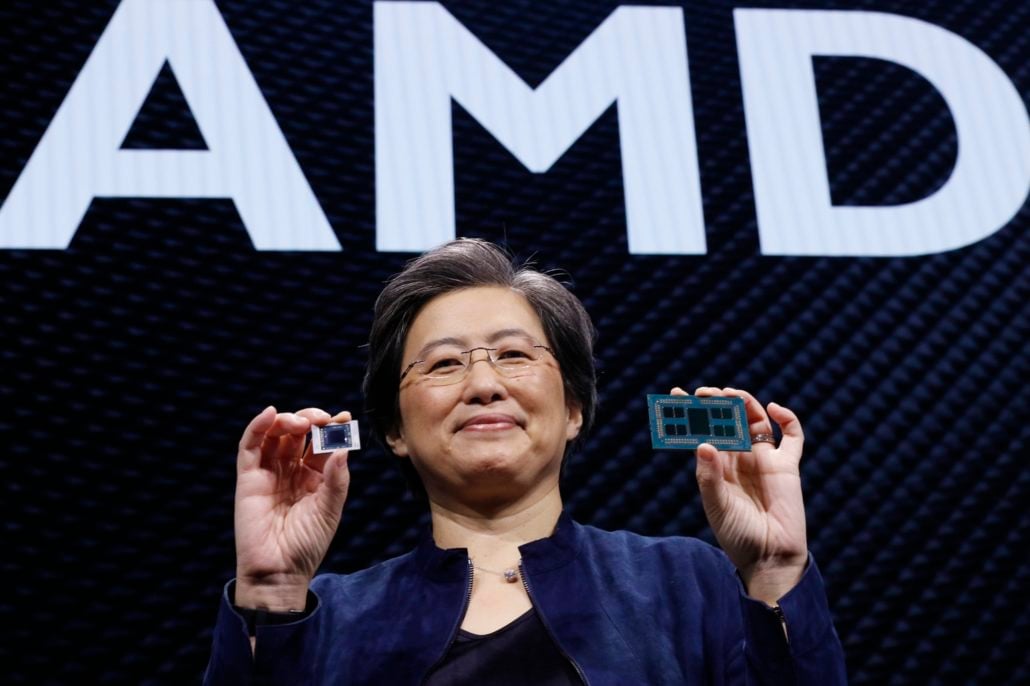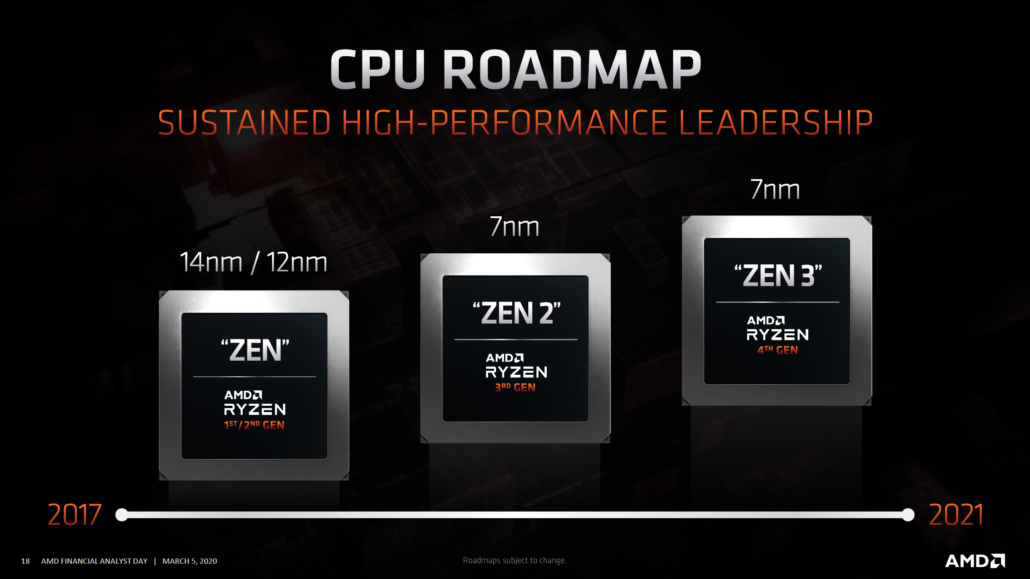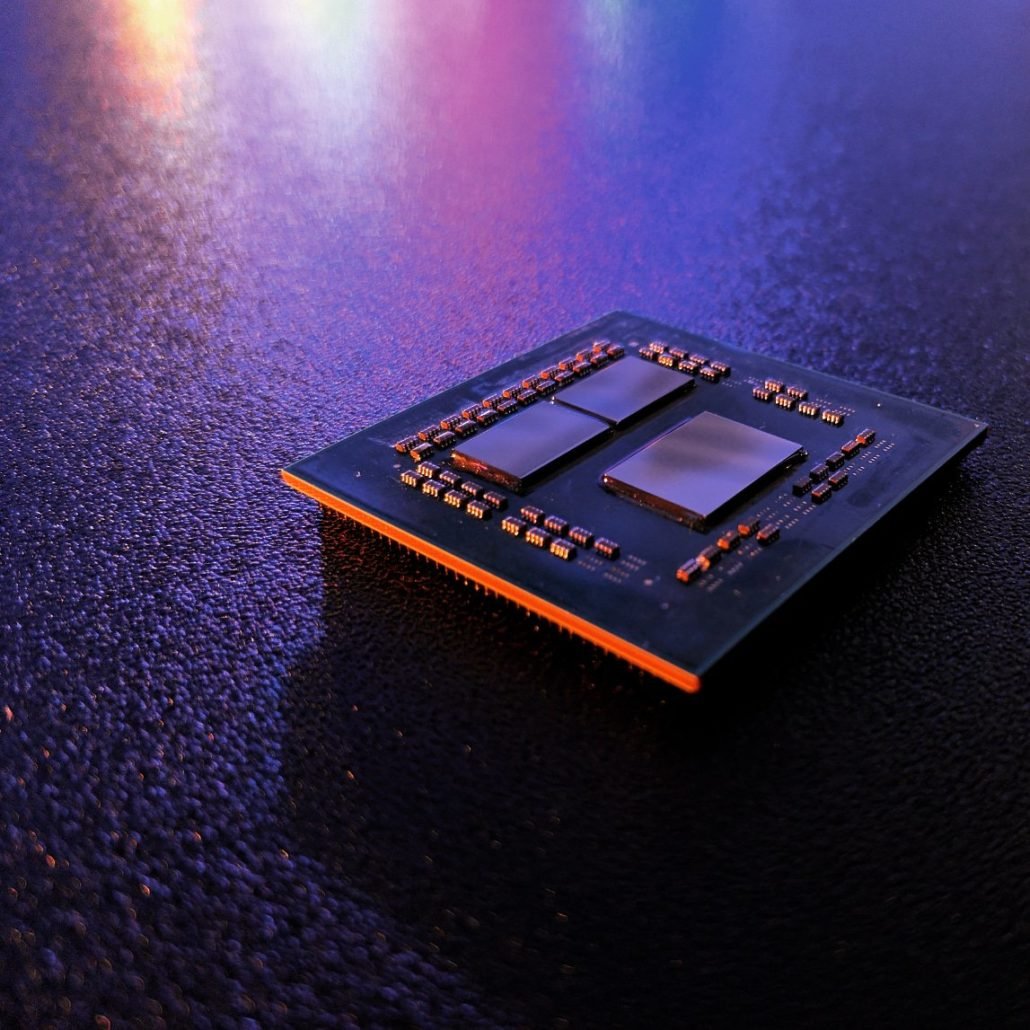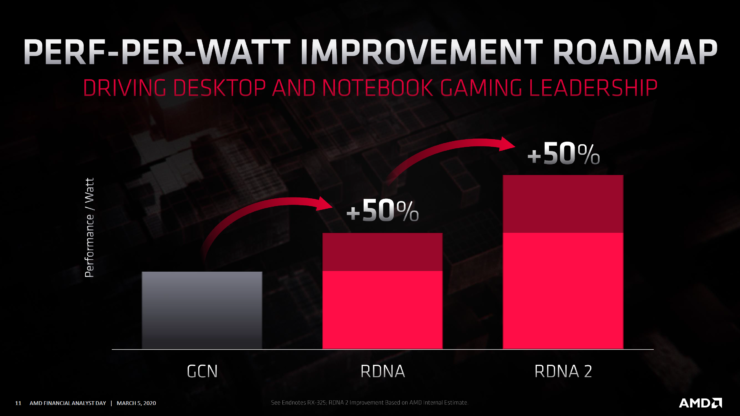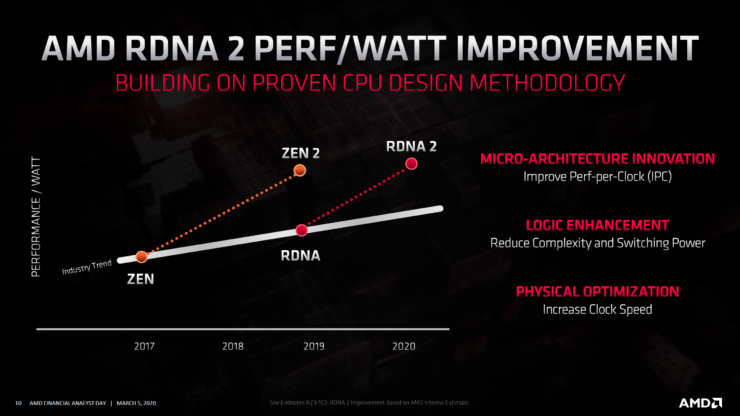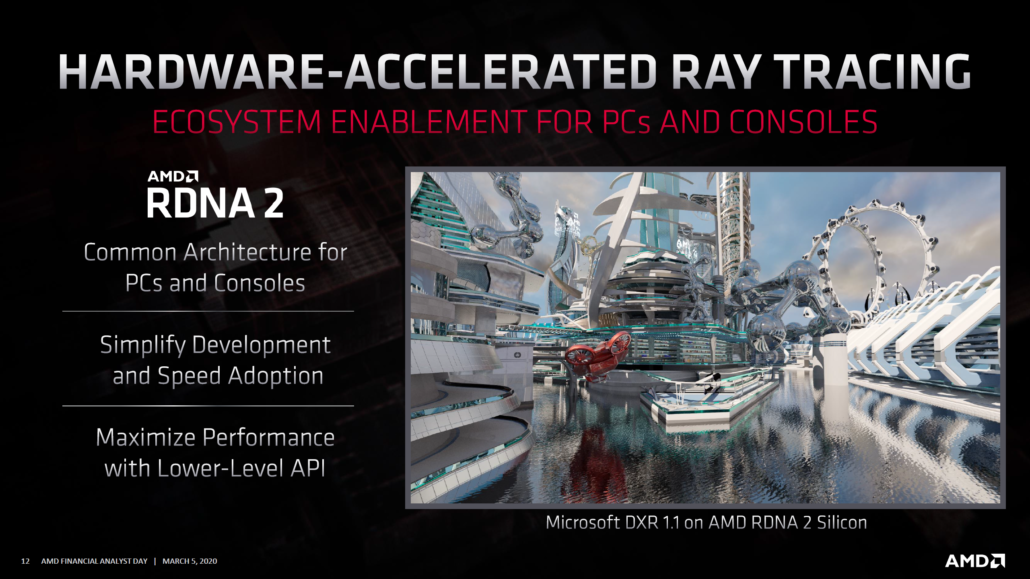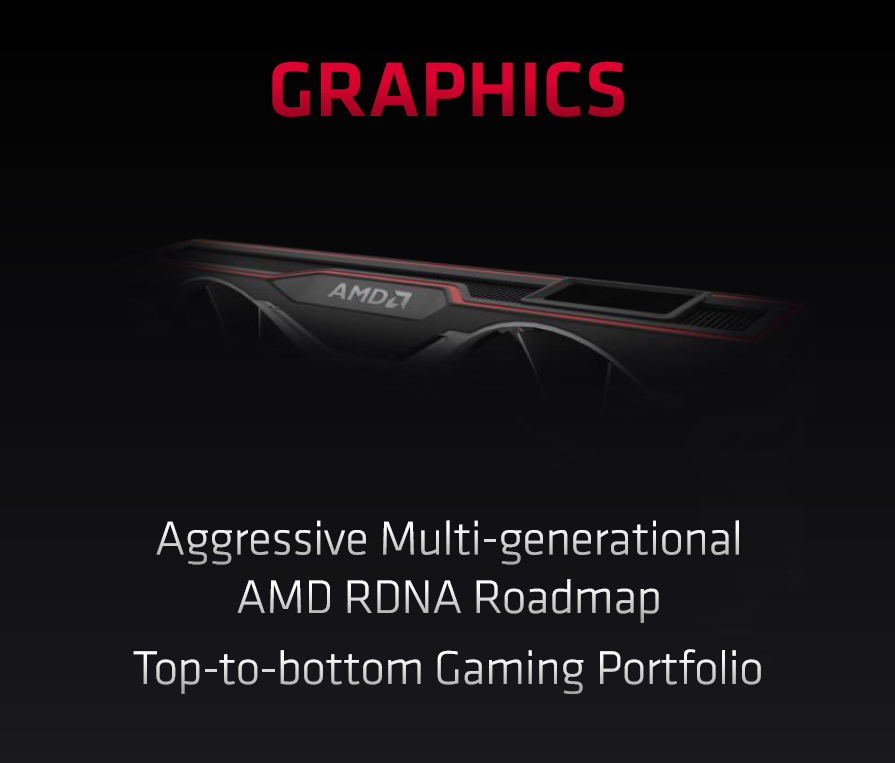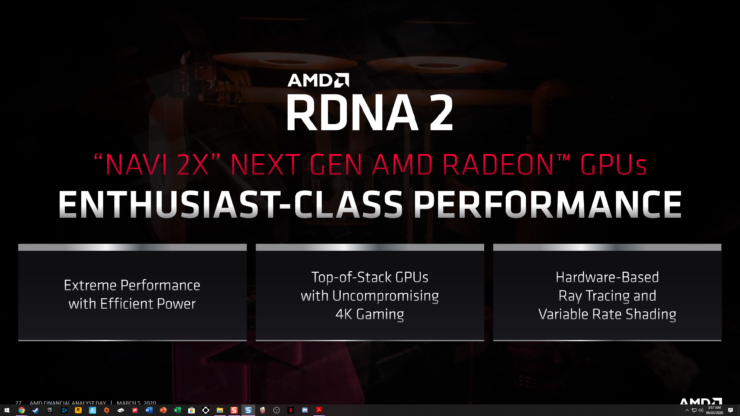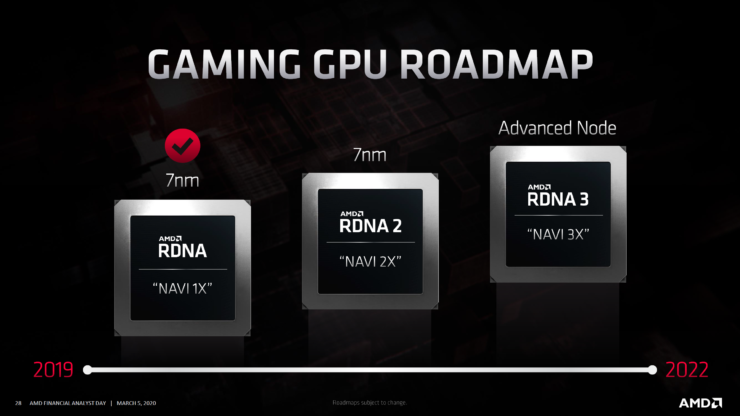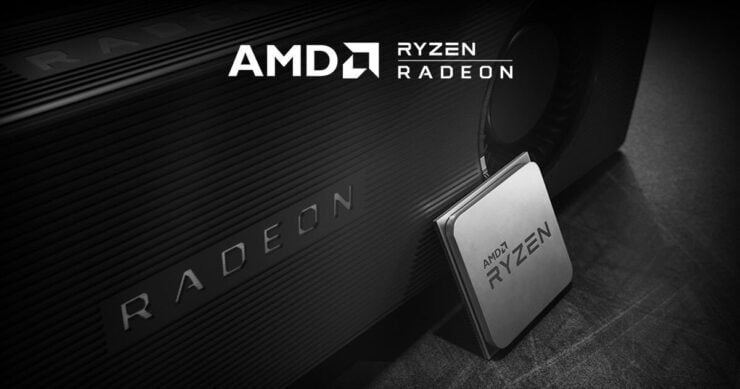
AMD announced its brand new Zen 3 CPU and RDNA 2 GPU architectures which would end up powering its next-generation desktop Ryzen 4000 processors and Radeon RX Navi 2X graphics cards at FAD 2020. Now reports from one of our sources suggest that both the desktop CPU & graphics cards are scheduled for launch in October of 2020.
AMD Ryzen 4000 ‘Zen 3 Vermeer’ CPUs & Radeon RX Navi 2X ‘RDNA 2’ GPUs Expected For Desktop Launch in October 2020
According to the source, the announcement for the Zen 3 based Ryzen 4000 ‘Vermeer’ CPUs and the RDNA 2 based Radeon RX Navi 2x graphics cards would be held prior to their release so we’re looking at either an August or September as an announcement platform but the most surprising thing to hear is both the CPU & GPUs would launch simultaneously.
It looks like AMD wants to have both high-end CPU/GPU platforms available on the same day so that people building new PCs can go all-AMD based on the performance of its next-generation product lineup. That would be very impressive for AMD if they can pull it off on the GPU side which might be true given the latest reports which suggest that AMD’s RDNA 2 flagship GPUs are going to be super competitive in the high-end 4K department. There’s still some time till Q3/Q4 2020 so we will be given more information along the way by AMD on its next-generation products but the info we have till now is mentioned below.
Here’s Everything We Know About AMD’s Zen 3 Based Ryzen 4000 ‘Vermeer’ Desktop CPUs
The AMD Zen 3 architecture is said to be the greatest CPU design since the original Zen. It is a chip that has been completely revamped from the group up and focuses on three key features of which include Significant IPC Gains, Faster Clocks & Higher Efficiency.
AMD has so far confirmed themselves that Zen 3 brings a brand new CPU architecture which helps deliver significant IPC gains, faster clocks and even higher core counts than before. Some rumors have even pointed to a 17% increase in IPC and a 50% increase in Zen 3’s floating-point operations along with a major cache redesign.
When asked about what kind of performance gain Milan’s CPU core microarchitecture, which is known as Zen 3, will deliver relative to the Zen 2 microarchitecture that Rome relies on in terms of instructions processed per CPU clock cycle (IPC), Norrod observed that — unlike Zen 2, which was more of an evolution of the Zen microarchitecture that powers first-gen Epyc CPUs — Zen 3 will be based on a completely new architecture.
Norrod did qualify his remarks by pointing out that Zen 2 delivered a bigger IPC gain than what’s normal for an evolutionary upgrade — AMD has said it’s about 15% on average — since it implemented some ideas that AMD originally had for Zen but had to leave on the cutting board. However, he also asserted that Zen 3 will deliver performance gains “right in line with what you would expect from an entirely new architecture.”
Other rumors have pointed out to a 50% increase in overall floating-point performance. We also got to see a major change to the cache design in an EPYC presentation, which showed that Zen 3 would be offering a unified cache design which should essentially double the cache that each Zen 3 core could have access compared to Zen 2. In Zen 2, each CCD is comprised of two CCX, with each CCX having a separate 16 MB L3 cache, even though the CCD contains a 32 MB L3 cache. With Zen 3, the entire 32 MB+ L3 Cache will be available to both CCX’s and do note that Zen 3 could also carry more than just 32 MB of cache as pointed out in the slide.
The CPUs are also expected to get up to 200-300 MHz clock boost which should bring Zen 3 based Ryzen processors close to the 9th Generation Intel Core offerings. That, along with the massive IPC increase and general changes to the architecture, would result in much faster performance than existing Ryzen 3000 processors which already made a huge jump over Ryzen 2000 and Ryzen 1000 processors while being an evolutionary product rather than revolutionary, as AMD unveiled very recently.
The key thing to consider is that we will get to see return of the chiplet architecture and AMD will retain support on the existing AM4 socket. The AM4 socket was to last until 2020 so it is likely that the Zen 3 based Ryzen 4000 CPUs would be the last family to utilize the socket before AMD goes to AM5 which would be designed around future technologies such as DDR5 and PCIe 5.0. AMD’s X670 chipset was also hinted as to arrive by the end of this year and will feature enhanced PCIe Gen 4.0 support and increased I/O in the form of more M.2, SATA, and USB 3.2 ports.
As for competition, the AMD Ryzen 4000 ‘Zen 3 Vermeer’ lineup would compete against Intel’s soon to be released Comet Lake-S and its upcoming Rocket Lake-S desktop processors. Tackling the Intel Comet Lake-S won’t be so hard since the Ryzen 3000 CPUs are competitively positioned against the entire lineup as evident from the recent performance leaks but Rocket Lake-S seems to be a major architectural uplift for Intel (although still based on 14nm process) which might just be Intel’s way back in the desktop mainstream market.
With that said, Rocket Lake-S is still something that needs to be evaluated prior to its release before we can call it a Zen 3 challenger but time would make it clear. As for now, the competitive advantage that AMD has with its Zen 2 based Ryzen 3000 is just way too big compared to whatever Intel has in their sleeves for this year and Zen 3 based Ryzen 4000 processors are going to push that envelope even further.
AMD CPU Roadmap (2018-2020)
| Ryzen Family | Ryzen 1000 Series | Ryzen 2000 Series | Ryzen 3000 Series | Ryzen 4000 Series | Ryzen 5000 Series |
|---|---|---|---|---|---|
| Architecture | Zen (1) | Zen (1) / Zen+ | Zen (2) / Zen+ | Zen (3) | Zen (4) |
| Process Node | 14nm | 14nm / 12nm | 7nm | 7nm+ | 5nm? |
| High End Server (SP3) | EPYC ‘Naples’ | EPYC ‘Naples’ | EPYC ‘Rome’ | EPYC ‘Milan’ | EPYC ‘Genoa’ |
| Max Server Cores / Threads | 32/64 | 32/64 | 64/128 | TBD | TBD |
| High End Desktop (TR4) | Ryzen Threadripper 1000 Series | Ryzen Threadripper 2000 Series | Ryzen Threadripper 3000 Series (Castle Peak) | Ryzen Threadripper 4000 Series (Genesis Peak) | Ryzen Threadripper 5000 Series |
| Max HEDT Cores / Threads | 16/32 | 32/64 | 64/128 | 64/128? | TBD |
| Mainstream Desktop (AM4) | Ryzen 1000 Series (Summit Ridge) | Ryzen 2000 Series (Pinnacle Ridge) | Ryzen 3000 Series (Matisse) | Ryzen 4000 Series (Vermeer) | Ryzen 5000 Series |
| Max Mainstream Cores / Threads | 8/16 | 8/16 | 16/32 | TBD | TBD |
| Budget APU (AM4) | N/A | Ryzen 2000 Series (Raven Ridge) | Ryzen 3000 Series (Picasso 14nm Zen+) | Ryzen 4000 Series (Renior) | Ryzen 5000 Series |
| Year | 2017 | 2018 | 2019 | 2020 | 2021? |
What do you want to see in AMD’s next-gen desktop CPUs?
- Higher IPC
- Higher Clock Speeds
- Higher CPU Core Count
- Better Price / Performance
- Higher Overclock Capbilities
- New Architectural Features (DDR5/PCIe5/Infinity Fabric 3.0/etc)
View ResultsPoll Options are limited because JavaScript is disabled in your browser.
Here’s Everything We Know About AMD’s RDNA 2 Based Radeon RX Navi 2X Desktop GPUs
The AMD RDNA 2 based Radeon RX Navi 2x graphics card family is also touted to disrupt the 4K gaming segment similar to how Ryzen disrupted the entire CPU landscape. That’s a pretty bold claim from AMD themselves but leaks and rumors are suggesting that this might be the case for AMD’s next-generation Radeon RX graphics cards.
AMD unveiled that its RDNA2 GPUs will deliver a similar performance jump over the first-gen RDNA GPUs like Zen 2 delivered over Zen 1. The first RDNA GPUs delivered a massive 50% increase in performance per watt over GCN architecture and RDNA2 GPUs are expected to do the same over RDNA1, delivering another 50% increase in performance per watt.
According to the roadmap shared by AMD, the RDNA2 GPUs would feature three key features that will be part of the new GPU architecture. First and foremost is the performance per watt increase which is due to a number of reasons. AMD will be shifting from TSMC’s 7nm process to the more advanced 7nm process node. The new process node itself increases transistor efficiency on the new GPUs while decreasing its overall size, allowing AMD to cram more performance in a much smaller package.
The key changes that have led to a 50% increase in performance per watt include a redesigned micro-architecture with improved performance-per-clock (IPC), a logic enhancement that helps reduce design complexity and switching power and physical optimizations such as increased clock speeds.
AMD has also announced that RDNA2 GPUs would feature VRS (Variable Rate Shading) & hardware-accelerated ray tracing. AMD is following suit with NVIDIA here who have already implemented the said technologies on its Turing GPU based GeForce RTX graphics cards. With the launch of the new consoles from Microsoft and Sony imminent, AMD is going to work to provide these features with its own optimization framework to developers for integration within next-generation gaming titles.
AMD has also recently showcased its RDNA 2 GPUs running Microsoft’s DXR 1.1 (DirectX 12 API Ultimate) demo internally which utilizes hardware-accelerated ray tracing. AMD’s approach to ray tracing is to offer simplified development and speedy adopting and that is definitely possible through consoles where the mass majority of game developers focus their efforts towards.
AMD’s CEO, Dr.Lisa Su, has already stated that we can expect a new RDNA2 GPU based Radeon RX high-end family and a 7nm RDNA refresh family to launch this year. The same was stated during the presentation in which it was stated that the “Navi 2x” lineup would scale from top to bottom and as the name suggests, would deliver twice the performance efficiency increase over the first-generation RX graphics cards.
Q: Lisa, can you give us some idea of what new GPUs you’re expected to launch to the rest of 2020, for PCs and for data center?
LS: Yes. In 2019, we launched our new architecture in GPUs, it’s the RDNA architecture, and that was the Navi based products. You should expect that those will be refreshed in 2020 – and we’ll have a next-generation RDNA architecture that will be part of our 2020 lineup. So we’re pretty excited about that, and we’ll talk more about that at our financial analyst day. On the data center GPU side, you should also expect that we’ll have some new products in the second half of this year.
With that said, we are already aware of a recent rumor which pointed out that AMD’s high-end Radeon RX Navi GPUs could be up to twice as fast as Navi 10, featuring a massive die size and GDDR6 memory. Some of the features to expect from 2nd Generation RDNA Navi GPUs would be:
- Optimized 7nm process node
- Enthusiast-grade desktop graphics card options
- Hardware-Level Ray Tracing Support
- A mix of GDDR6 and HBM2 graphics cards
- More power-efficient than First-Gen Navi GPUs
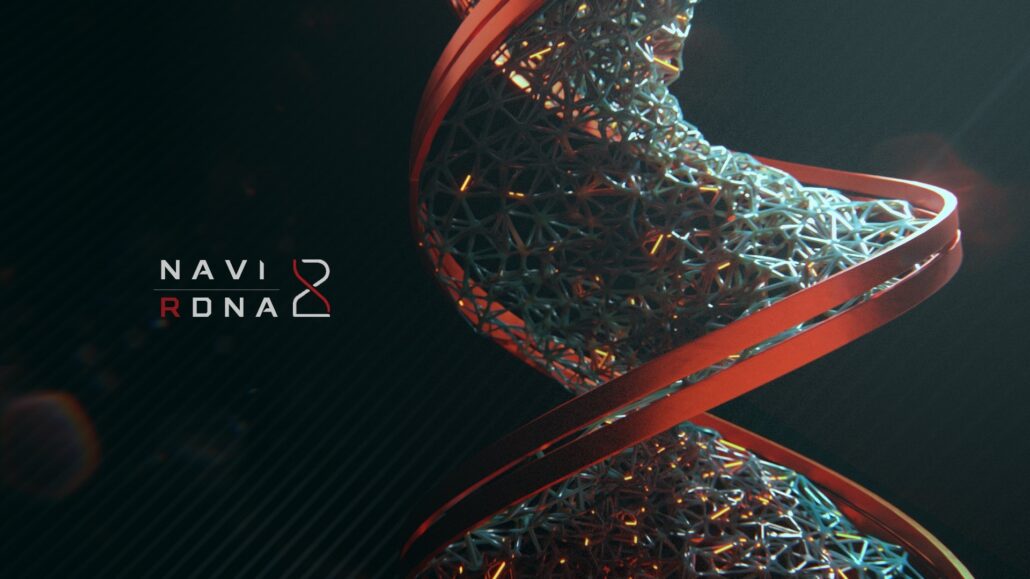 Image Credits: (@DaQuteness)
Image Credits: (@DaQuteness)
One of the key features on the Big Navi Radeon RX GPU is that it is going to disrupt the 4K gaming segment, similar to how Ryzen disrupted the entire CPU segment. These are some bold claims by AMD but if those rumored specifications are anything to go by, then these claims may not be that far fetched.
“With the Radeon 5000-series we are essentially covering 90-something-percent of the total PC gamers today,” says Chandrasekhar. “And so that’s the reason why no 4K right now, it’s because the vast majority of them are at 1440p and 1080p.
“That doesn’t mean a 4K-capable GPU isn’t coming, it is coming, but for here and now we want to focus on the vast majority of gamers.”
“Similar to Ryzen,” he says, “all of us need a thriving Radeon GPU ecosystem. So, are we going after 4K, and going to similarly disrupt 4K? Absolutely, you can count on that. But that’s all I can say right now.”
Once again, AMD in its own presentation emphasized enthusiast-class performance for the RDNA 2 based Radeon RX ‘Navi 2X’ GPUs so that’s something to consider. The competition however from the other side won’t just go eyes closed as AMD launches its high-performance graphics cards. The next-generation NVIDIA based GeForce GPUs are shaping up to be a beast on their own based on the early specs that we have seen.
What do you want to see in AMD’s next-gen RDNA 2 GPUs?
- Higher End (Enthusiast) Options
- Better performance than competing cards
- Better Value than competing cards
- More Features (Ray Tracing, New AA Options, etc)
- Better reference cooler designs and no blower fan
- Better performance per watt than the competition
View ResultsPoll Options are limited because JavaScript is disabled in your browser.
Rumors have also suggested that NVIDIA would aim for a late 2020 launch that would mean a direct competition with RDNA 2 based desktop graphics cards. So it looks like Ryzen 4000 Zen 3 CPUs would compete against Intel’s Rocket Lake-S and AMD’s RDNA 2 GPUs would compete against whatever NVIDIA’s next-generation GPU inventory. Q3 and Q4 2020 would definitely be interesting times for all the hardware enthusiasts and mainstream PC gamers who are looking forward to upgrading their PCs with the best hardware.

